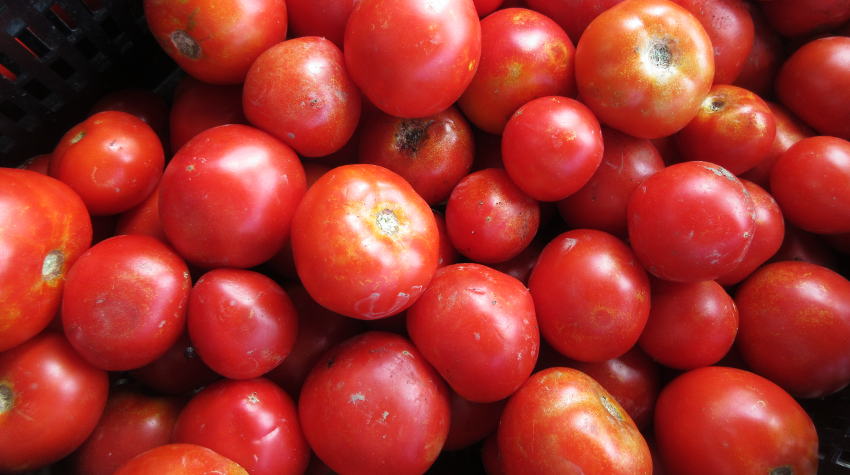Time to take the confusion out of tomatoes.
There are lots of different tomatoes out there. And I mean lots. Let's break down tomatoes a little and make it easier to choose what tomatoes are best for your garden.
Tomatoes can be broadly divided into a few different types or classifications based on their fruit characteristics.
- Beefsteak - Beefsteak is a classification, not one specific variety. These tomatoes tend to be large and meaty tomatoes. The size varies, but they do tend to be on the large size. The beefsteak type called Supersteak produces about 2lb tomatoes which is pretty impressive.
- Slicers - These are basically the all-around tomatoes that you often get in the stores. Medium in size and good yields.
- Paste, Sauce or Saladette - These are the more fleshy and dry varieties. Roma is probably the most common one and San Marzano is a very traditional Italian paste type and probably one of the driest tomatoes. They make great sauces and saladette usually refers to having chunks in your salad that don't fall apart like a Beefsteak probably would.
- Mini - These are basically all the small tomatoes. Cherry tomatoes, grape tomatoes, pear tomatoes, and now current tomatoes. These are all small tomatoes, usually with a high yield.
Now that we have our types settled out, you can narrow down your selection process. Next is to look at how the plant grows which is one of two ways.
- Determinate or Bush Type - These plants grow to a specific height and then stop growing up. Some are larger than others, but they take up far less space in the garden. Some super determinate types, like the compact Megabite, make excellent patio tomatoes in pots. They generally need less support, though it's always a good idea to add a little support to a tomato so the fruit doesn't touch the ground.
- Indeterminate - These plants just keep growing. Some can be quite massive. My Supersteak plant covered an area at least 6' diameter last year. These plants really do need support as they just keep on growing.
Knowing the size and the type of tomato really helps narrow down your tomato selection. Next is to look at harvest time. Each variety has a different harvest time, often shown on the tags as days to harvest. If you're after multiple tomatoes, it's a good idea to stagger the harvest time by picking some with a short harvest time of 60-65 days all the way up to late harvest times of 80 days or more. By doing this, you don't end up with all your tomatoes at the same time. By getting larger plants started earlier, that means they spend less time in your garden before they set fruit. Often earlier crops of tomatoes grown in large pots are already 30-40 days old so that cuts your first harvest time in half.
Lastly, what's an heirloom? Essentially, it's an older variety of tomato with less breeding involved. It's a rather loose definition since and heirloom to one person may not be "old enough" to be and heirloom to somebody else. Sometimes heirlooms have a stronger flavour, but the trade off could be lower yields, cracking, or susceptibility to diseases. Heirlooms are also not necessarily labelled as such so it takes a little homework to figure them out.
You have your tomato selection all figured out. Now it's time to plant. I always say, use some poop. Tomatoes like food so adding a healthy dose of manure does wonders for a tomato plant, or any vegetable garden for that matter. If you're growing in a pot, you will need extra food in the form of fertilizer. From there on in, enjoy your tomatoes!

